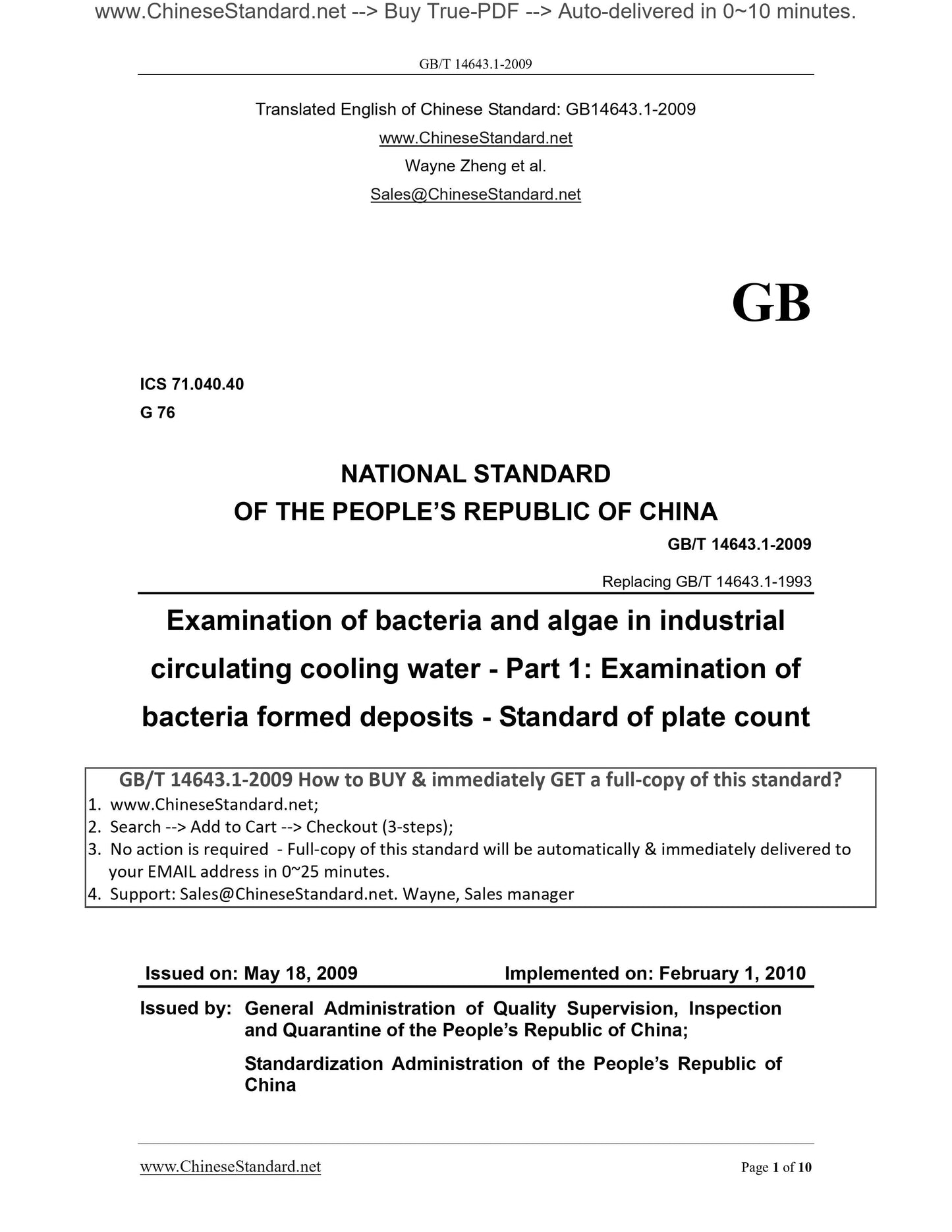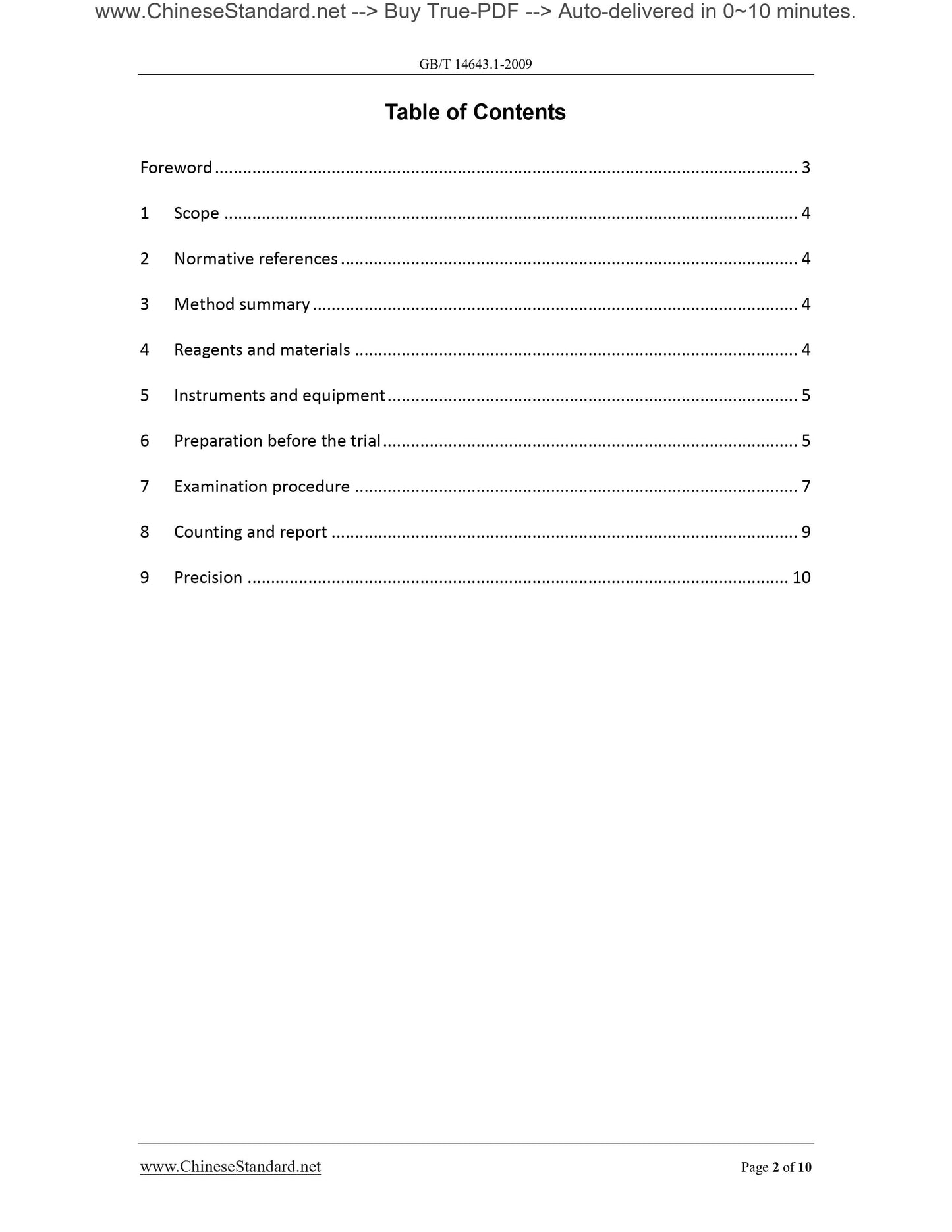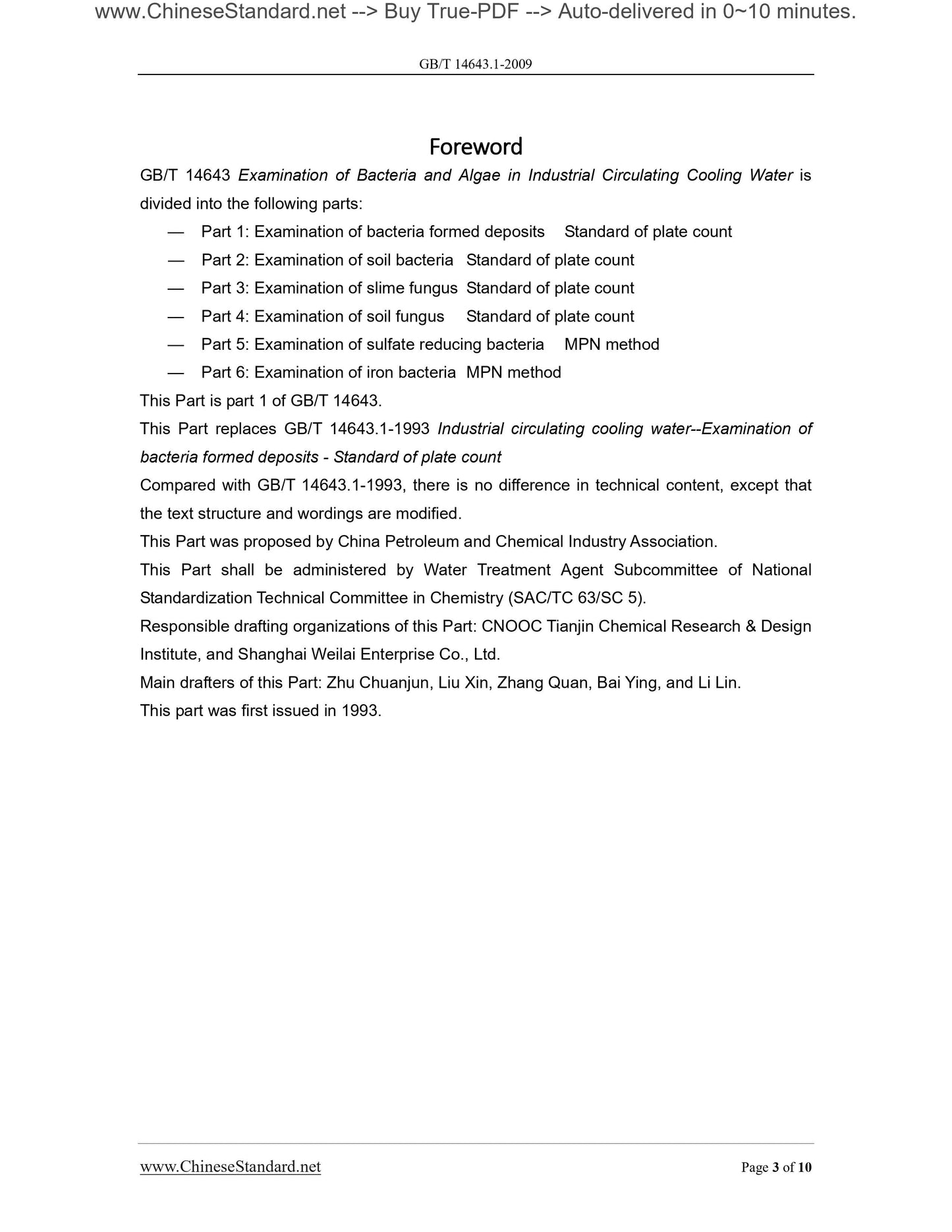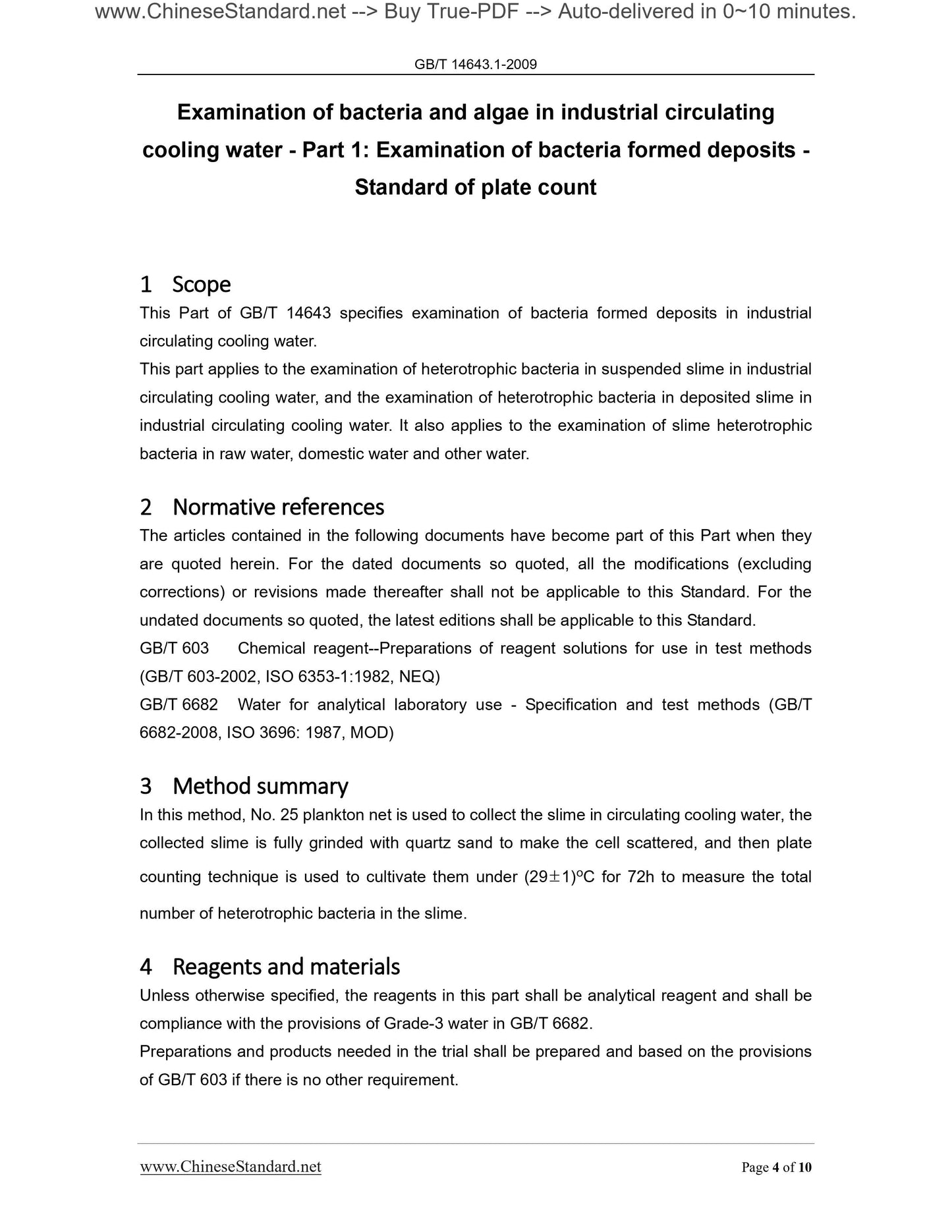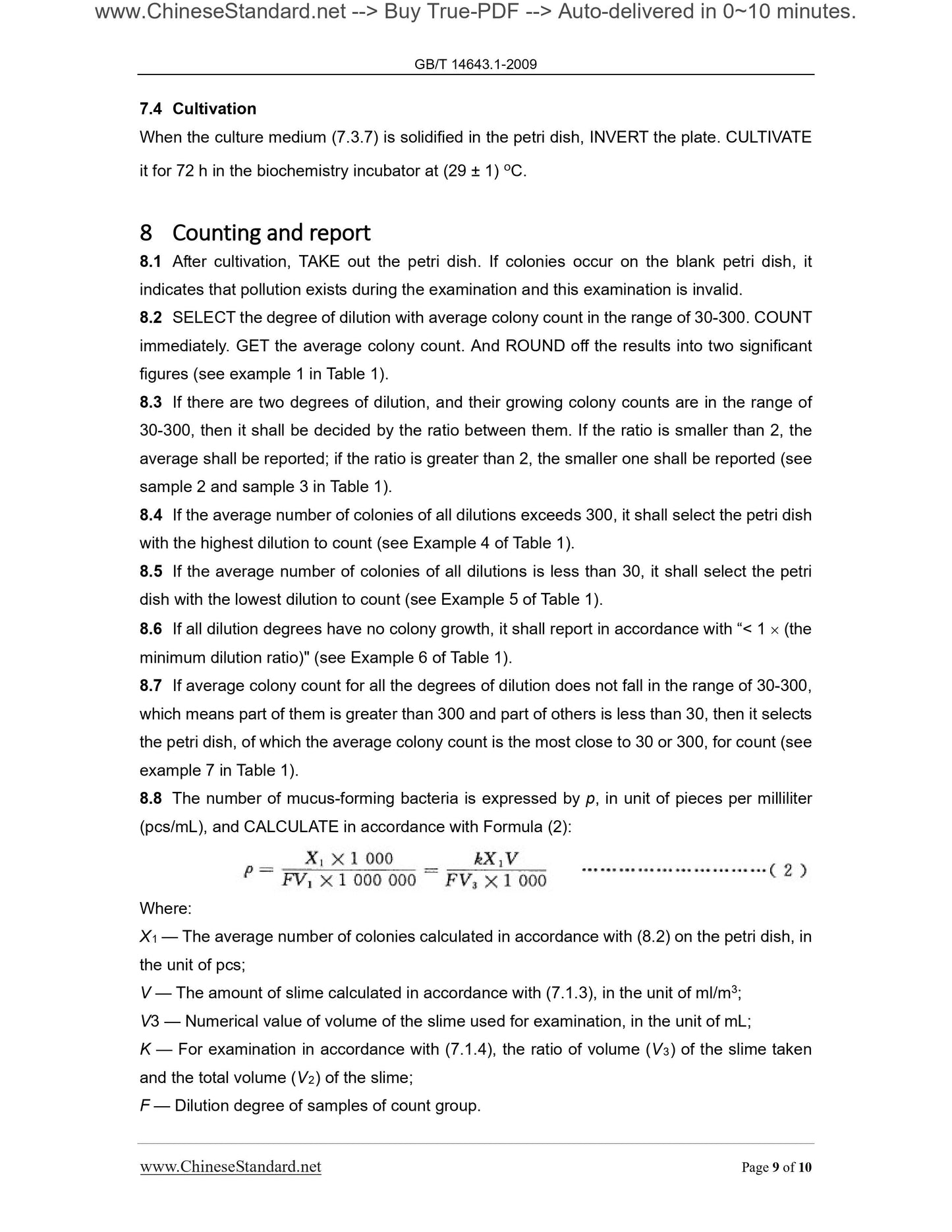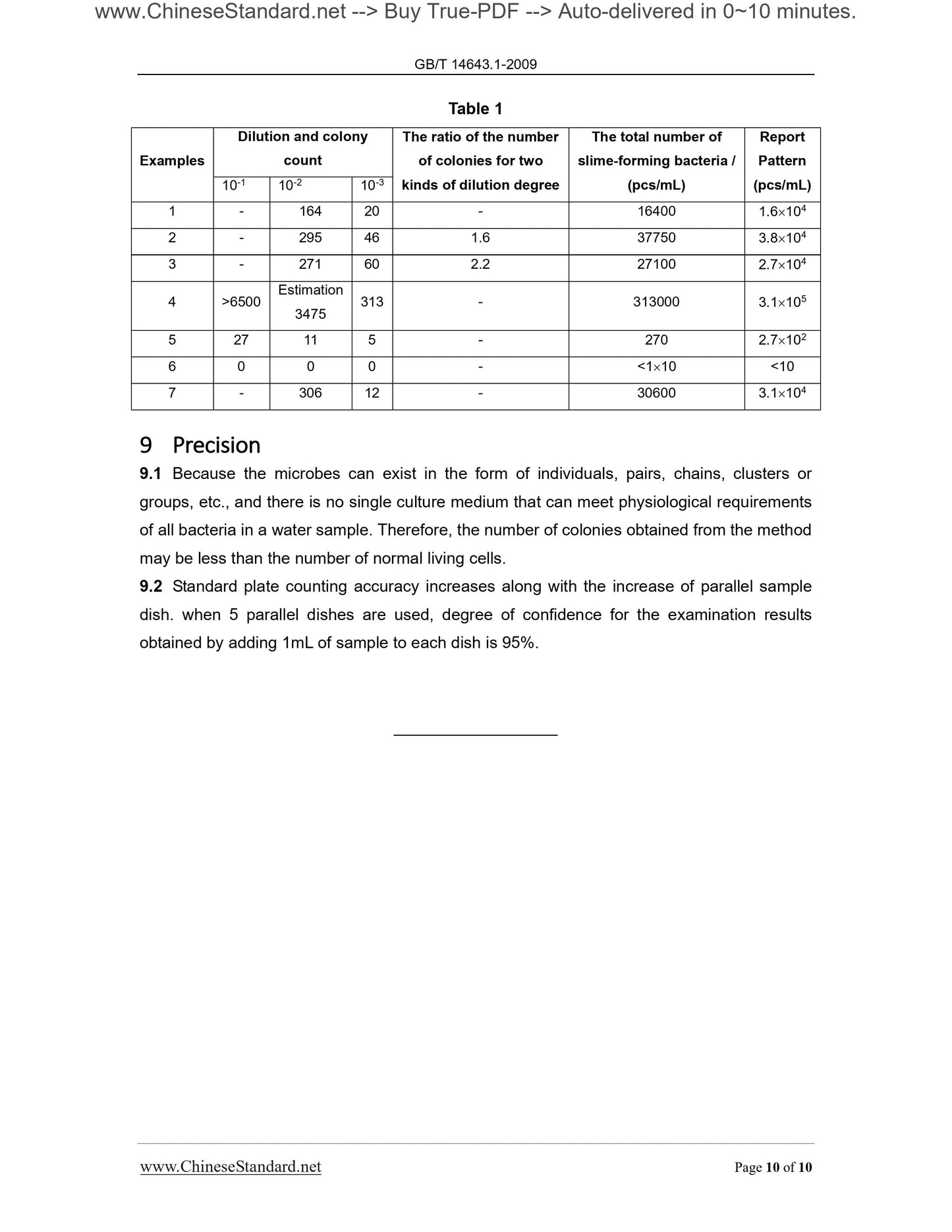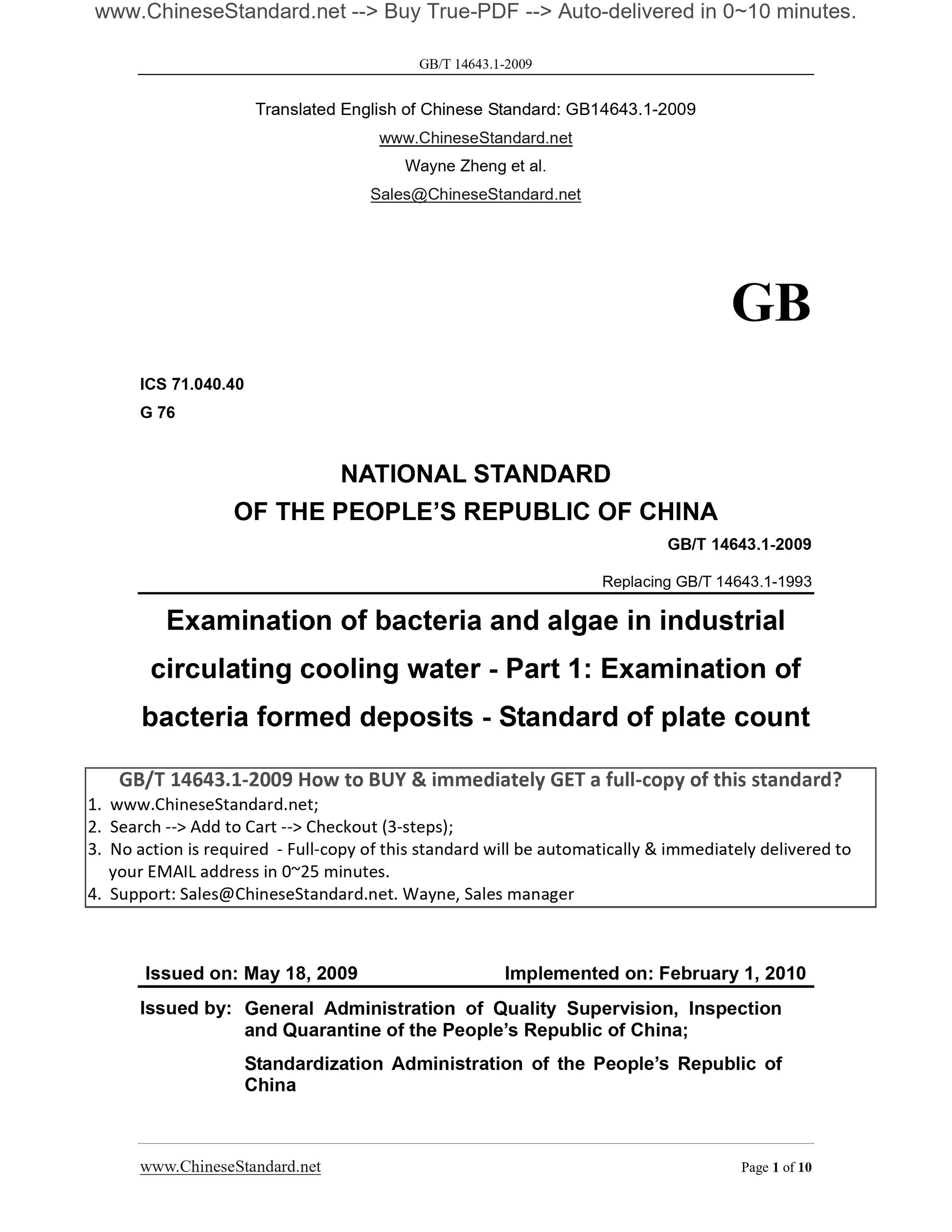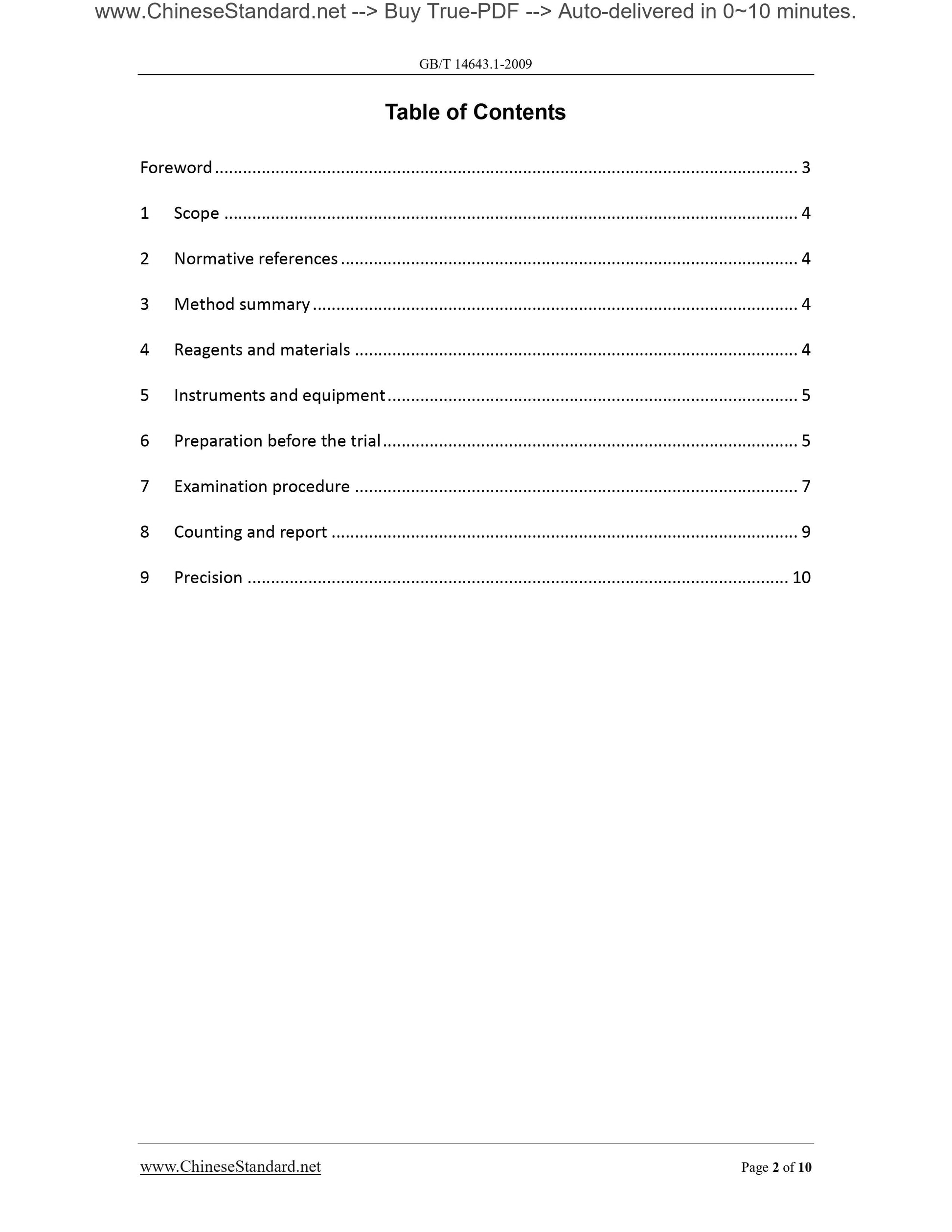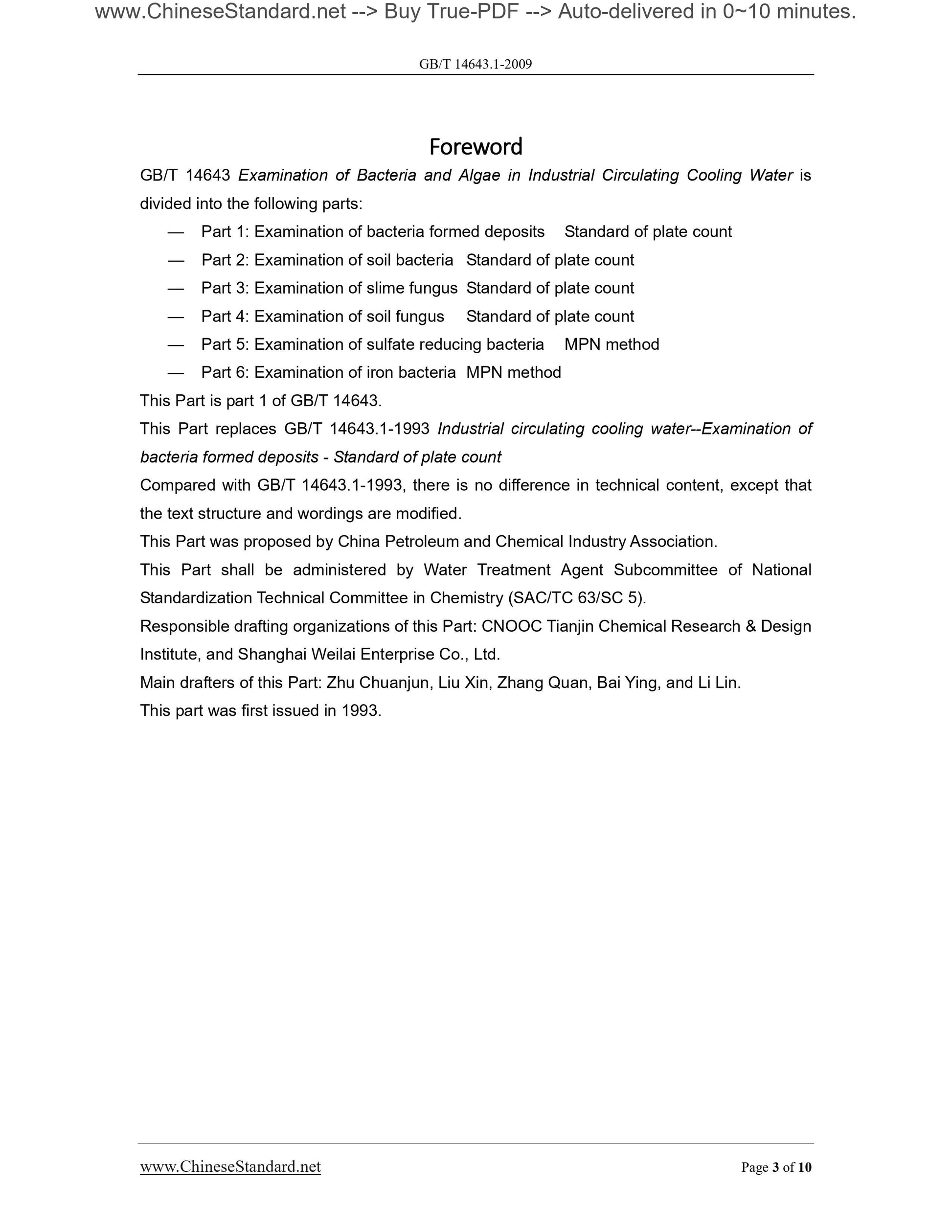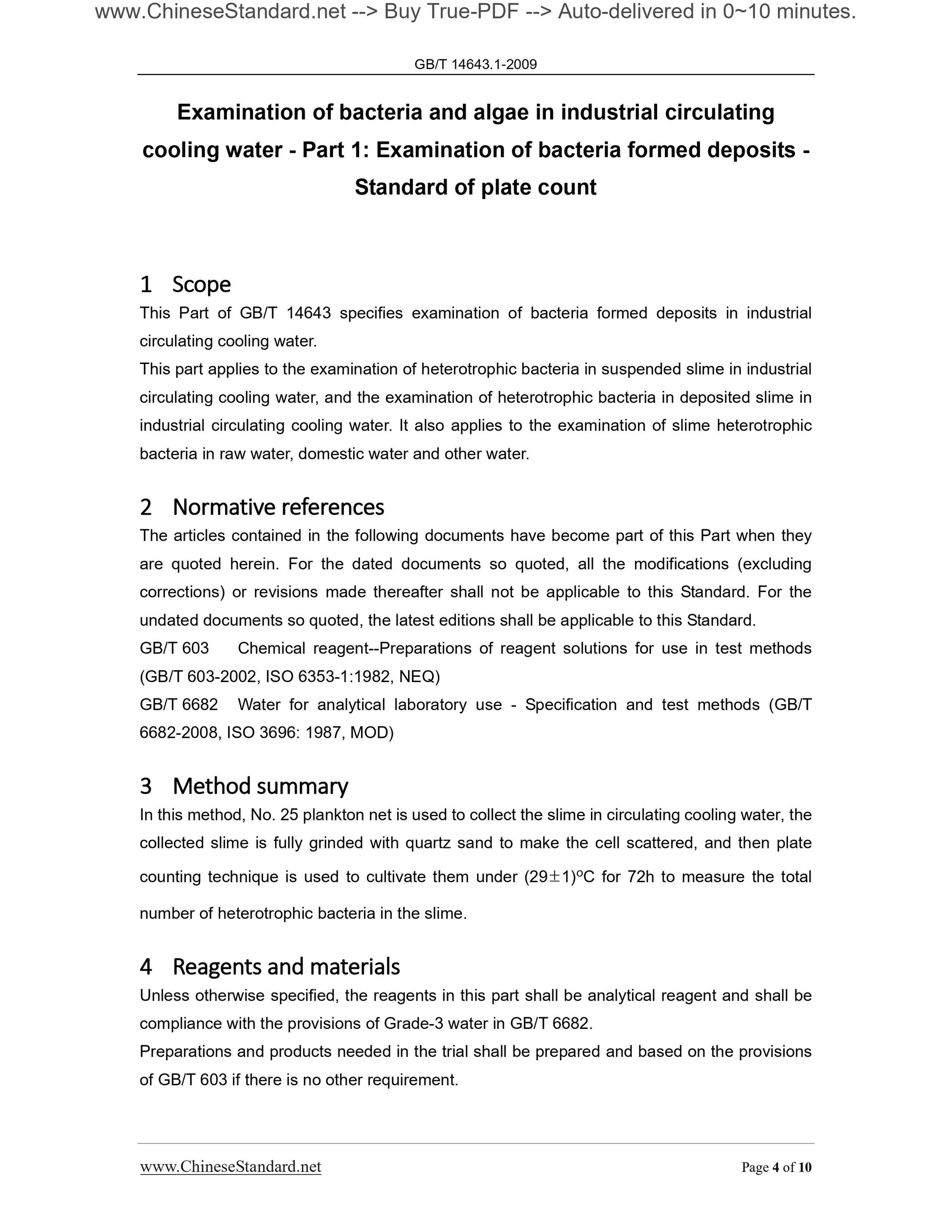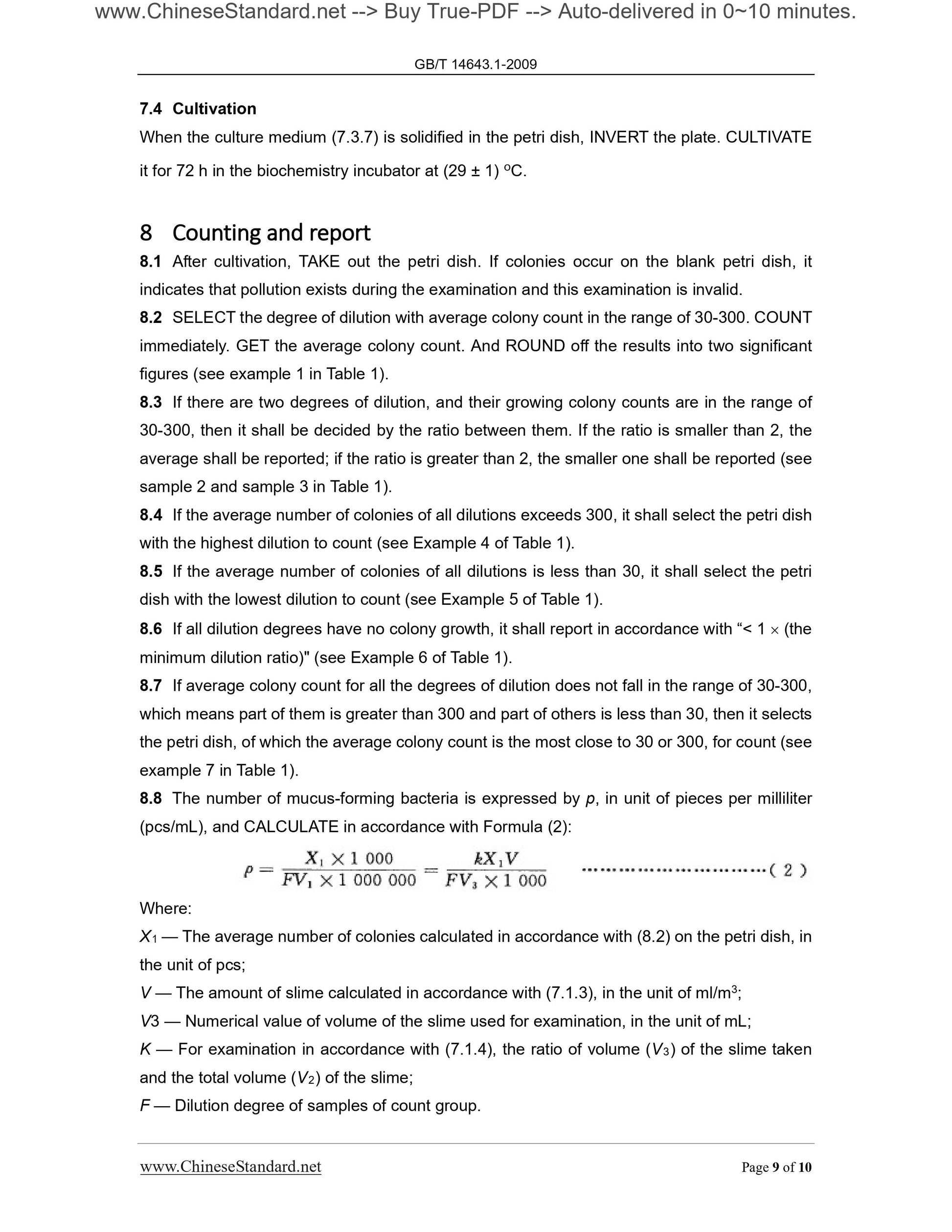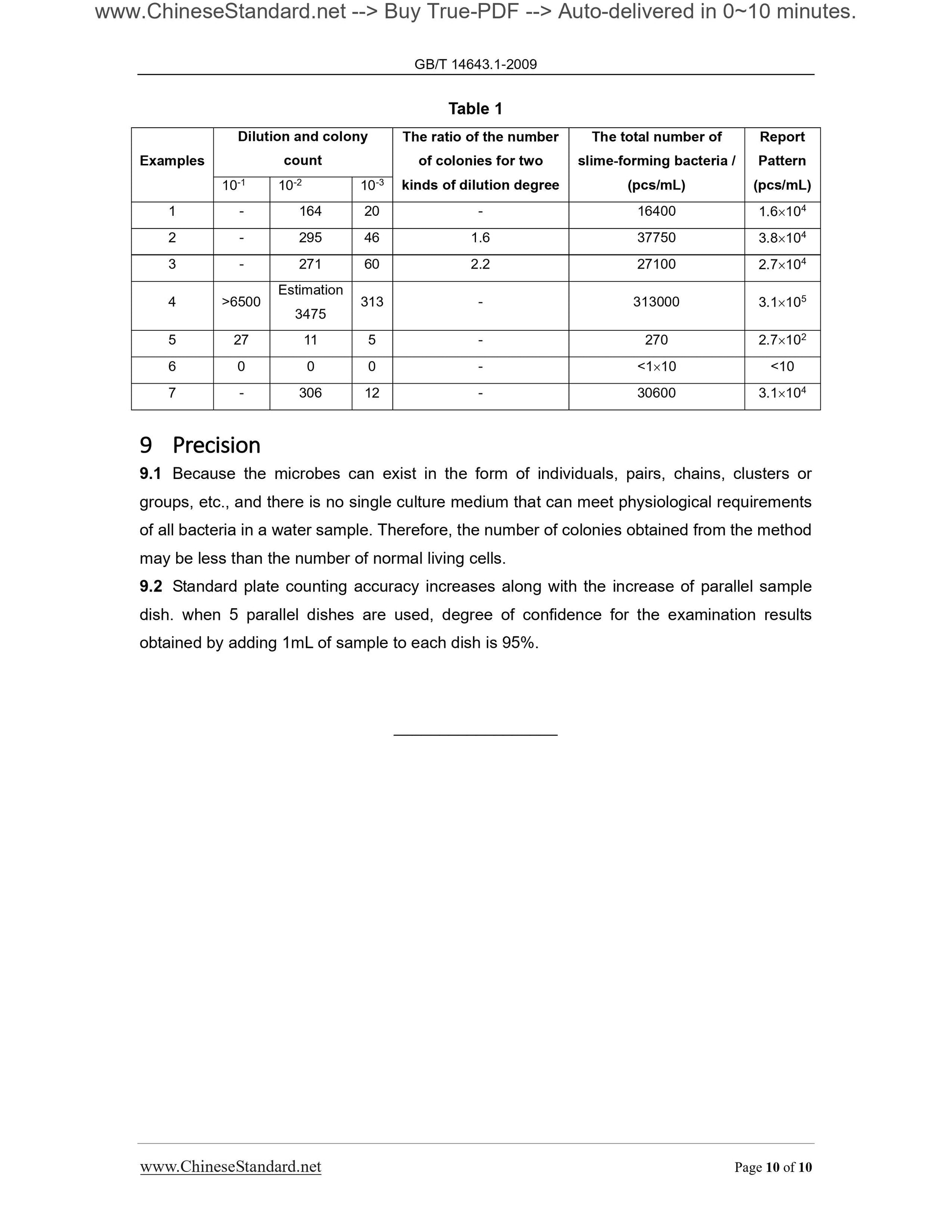1
/
of
6
www.ChineseStandard.us -- Field Test Asia Pte. Ltd.
GB/T 14643.1-2009 English PDF (GB/T14643.1-2009)
GB/T 14643.1-2009 English PDF (GB/T14643.1-2009)
Regular price
$130.00
Regular price
Sale price
$130.00
Unit price
/
per
Shipping calculated at checkout.
Couldn't load pickup availability
GB/T 14643.1-2009: Examination of bacteria and algae in industrial circulating cooling water -- Part 1: Examination of bacteria formed deposits -- Standard of plate count
Delivery: 9 seconds. Download (and Email) true-PDF + Invoice.Get Quotation: Click GB/T 14643.1-2009 (Self-service in 1-minute)
Newer / historical versions: GB/T 14643.1-2009
Preview True-PDF
Scope
This Part of GB/T 14643 specifies examination of bacteria formed deposits in industrialcirculating cooling water.
This part applies to the examination of heterotrophic bacteria in suspended slime in industrial
circulating cooling water, and the examination of heterotrophic bacteria in deposited slime in
industrial circulating cooling water. It also applies to the examination of slime heterotrophic
bacteria in raw water, domestic water and other water.
Basic Data
| Standard ID | GB/T 14643.1-2009 (GB/T14643.1-2009) |
| Description (Translated English) | Examination of bacteria and algae in industrial circulating cooling water -- Part 1: Examination of bacteria formed deposits -- Standard of plate count |
| Sector / Industry | National Standard (Recommended) |
| Classification of Chinese Standard | G76 |
| Classification of International Standard | 71.040.40 |
| Word Count Estimation | 10,185 |
| Date of Issue | 2009-05-18 |
| Date of Implementation | 2010-02-01 |
| Older Standard (superseded by this standard) | GB/T 14643.1-1993 |
| Regulation (derived from) | National Standard Approval Announcement 2009 No.6 (Total No.146) |
| Issuing agency(ies) | General Administration of Quality Supervision, Inspection and Quarantine of the People's Republic of China, Standardization Administration of the People's Republic of China |
| Summary | This standard specifies the method for measuring industrial circulating cooling water mucus forming bacteria. This section applies to the determination of industrial circulating cooling water suspended in the slime of heterotrophic bacteria. Also applies to the determination of heterotrophic bacteria for industrial circulating cooling water deposition sticky mud. Also applies to raw water, domestic water and other water determination mucus heterotrophic bacteria. |
Share
